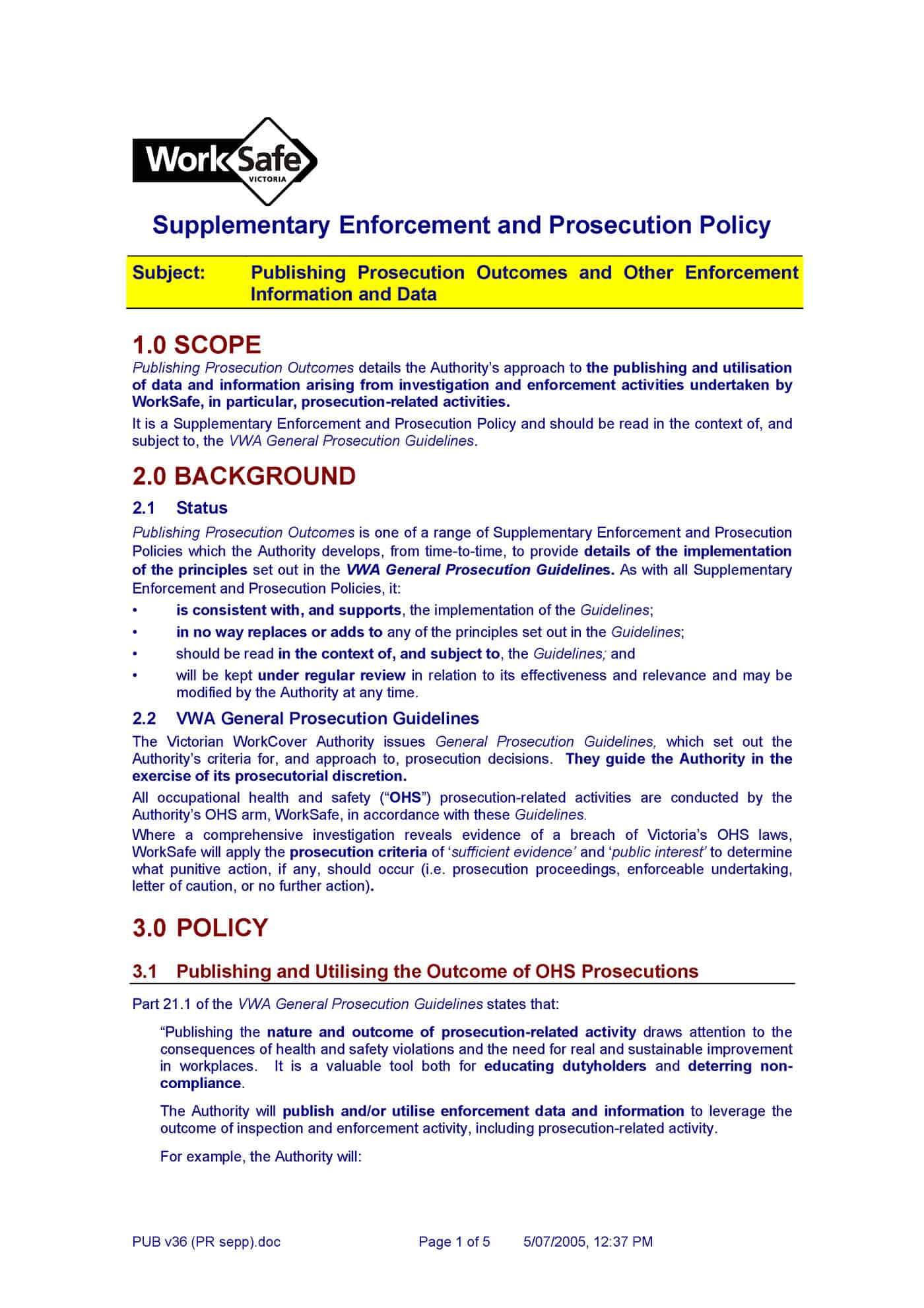In Sydney this afternoon a workplace safety trade show held a fascinating (and free) panel discussion on safety in construction. The topic of Safe Work Method Statements (SWMS) was raised, as expected, but the comments were sound – SWMS are only required for specific high-risk activities so make them simple enough to satisfy legislative requirements…
Category: consultation
Have Moot Courts had their day for OHS purposes?
 The purpose of OHS Moot Courts is to provide a taste of the Court experience in the context of a prosecution for occupational health and safety (OHS). Moot Courts and Mock Trials [for the purposes of this article the concepts are interchangeable] have specific meanings in law schools and overseas but in Australia there is an increasing trend to tweak the moot/mock format to motivate OHS change by showing the consequences of an OHS breach and resultant prosecution. This application of the concept still needs refining both in structure and purpose but may have had its time.
The purpose of OHS Moot Courts is to provide a taste of the Court experience in the context of a prosecution for occupational health and safety (OHS). Moot Courts and Mock Trials [for the purposes of this article the concepts are interchangeable] have specific meanings in law schools and overseas but in Australia there is an increasing trend to tweak the moot/mock format to motivate OHS change by showing the consequences of an OHS breach and resultant prosecution. This application of the concept still needs refining both in structure and purpose but may have had its time.
SafetyAtWorkBlog has attended around half a dozen such events since a cold rainy night at Monash University law faculty over 30 years ago. That Moot Court, conducted by the Australian Human Resources Institute, had a genuine sense of occasion and fear. Prosecutors went in hard as is the potential for any court case. A more recent OHS Moot Court was almost jovial and failed to communicate the import of the court process and, therefore, the significance of the potential consequences of the court’s decision. Continue reading “Have Moot Courts had their day for OHS purposes?”
WHS, performance indicators, annual reports and other thoughts
Macquarie University researcher Sharron O’Neill is traveling around Australia refining, through consultation and seminars, her research into Work Health and Safety (WHS) Due Diligence. In a Melbourne seminar this week O’Neill, and her colleague, Karen Wolfe, provided thought-provoking discussions on three principal areas:
- Due Diligence,
- Performance Indicators, and
- Reporting.
Below are some of my thoughts that they provoked.
WHS Due Diligence
WHS Due Diligence is still a poorly understood concept. Part of the reason is that the major explainers of due diligence seem to be, predominantly, labour lawyers who, not surprisingly, emphasis the legal requirements and origins rather than the safety elements and application. There are few safety professionals who are explaining due diligence; rather they are discussing OHS/WHS in the context of due diligence.
One colleague explained how an established organisation employed her as their first dedicated OHS professional around the same time as due diligence was being discussed as part of the national OHS harmonisation process. By looking through the company’s existing system of work,
Investing in new and young workers can be tough but rewarding
Commenting on the Australian Government’s new employment services model, Anglicare provided a research paper, Beyond Supply and Demand, that referenced occupational health and safety (OHS) and so caught our attention. The report said:
“…job seekers may experience issues with the importance of getting to work on time, keeping the employer informed if they are unable to attend work, and the following of basic policies and procedures, such as those around occupational health and safety (Cortis et al., 2013). The research also identified that this lack of workplace knowledge leads to assumptions that recruits were lacking in work ethic or disinterested in the work.” (page 6)
The report goes on to discuss the social services context primarily but the OHS mention deserved following up. The research by Natasha Cortis, Jane Bullen, and Myra Hamilton states that employers often misunderstand new job recruits and although OHS is specifically referenced only in the mention of reporting accidents, the rest of the quote below should be noted by employers and safety professionals when preparing OHS communications to new workers. Continue reading “Investing in new and young workers can be tough but rewarding”
A rough ride on OHS
 Since I heard about the Gaia hypothesis in the 1980s, I have read most of James Lovelock‘s books. I was confronted by his argument that nuclear power is undervalued as one of the cleanest and sustainable sources of power, as I have grown up listening to anti-nuclear activists like Helen Caldicott and being frightened by films like Fail Safe and Threads. I am not sure I agree with Lovelock but I respect him. In his latest book, though, he makes a couple of negative references to occupational health and safety (OHS) that are cheap shots, unfair or disappointing.
Since I heard about the Gaia hypothesis in the 1980s, I have read most of James Lovelock‘s books. I was confronted by his argument that nuclear power is undervalued as one of the cleanest and sustainable sources of power, as I have grown up listening to anti-nuclear activists like Helen Caldicott and being frightened by films like Fail Safe and Threads. I am not sure I agree with Lovelock but I respect him. In his latest book, though, he makes a couple of negative references to occupational health and safety (OHS) that are cheap shots, unfair or disappointing.
Lovelock says, on page 2 of “A Rough Ride to the Future” that the chemical industry is “now mainly run by an intelligent and usually responsible technocracy” but that
“…we may be hampered in our attempts to solve the large problems [of pollution] by the absurdly zealous application of health and safety laws.” (emphasis added)
In discussing oxygen levels in the atmosphere and how its regulation is so important, Lovelock says, in parentheses,
“We are fortunate there is no inbuilt health and safety system in Gaia, otherwise the dangers of fires would have led to the banning of its production.” (page 13)
This comment, moreso than the former, shows Lovelock misunderstands OHS regulation and application. Earlier in the book he praises the banning of chlorofluorocarbons on climatic reasons and then, absurdly, implies that OHS would advocate the banning of oxygen. It’s a cheap shot. OHS is about trying to eliminate the risk of harm and by investigating the source of the hazard, usually through the scientific method.
Disseminating OHS information should not be optional
 WorkSafe Victoria has been reviewing a series of enforcement and prosecution policies for some time. One of these policies set for re-issue relates specifically to the publication of prosecutorial information through its website and media releases and, although the “new” policy is not yet available, it may be worth remembering the previous policy, last revised in 2005.
WorkSafe Victoria has been reviewing a series of enforcement and prosecution policies for some time. One of these policies set for re-issue relates specifically to the publication of prosecutorial information through its website and media releases and, although the “new” policy is not yet available, it may be worth remembering the previous policy, last revised in 2005.
Media Releases
WorkSafe Victoria’s “Supplementary Enforcement and Prosecution Policy on Publishing Prosecution Outcomes and Other Enforcement Information and Data” (no longer available on-line) says that
“WorkSafe will release media statements and authorised representatives will grant media interviews, as appropriate, to the print, electronic, and/or broadcast media.” (original emphasis)
The reason behind this mode of dissemination, and others, is outlined elsewhere in the policy:
The CFMEU should make a case for union OHS representatives
In late March 2014, the Construction Forestry Mining and Energy Union (CFMEU) was fined $A1.25 million over a violent dispute at the Emporium construction site that occurred in 2012. In its media release about the fine, the CFMEU’s state secretary, John Setka, says:
“The protest at the Myer site in 2012 was about safety.”
Yes and no. The dispute was about the representation of workers on safety matters, which is a different thing. Setka goes on: Continue reading “The CFMEU should make a case for union OHS representatives”
